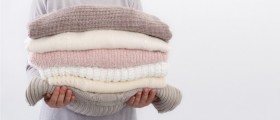
Your little bundle of joy's health is your primary consideration, from the moment he/she is born and throughout his/her life. Therefore, parents usually get quite worried once they see that their baby has developed certain rashes or some other skin conditions during early stages of his/her life. However, rest assured that, most of the time, these occurrences are not serious ones.
Yet, learning more about skin rashes and similar conditions in children is advisable due to the fact that this will broaden your knowledge and help you react better should your child suffer from any of these problems.
List of Conditions
Birthmarks can frighten the parents, even though these are not dangerous at all. Many birthmarks disappear after a while. On the other hand, some fade out or remain present on the skin of your child for the rest of his/her life. Nevertheless, if you witness any physical changes in the birthmark, you are advised to seek medical advice, for preventive purposes. The same goes for sores or growths near the eyes.
If your child gets born with small bumps found on the nose, cheeks or chin, the condition is called baby acne or milia. Both these conditions are considered harmless, appearing during the first couple of weeks of the baby's life, due to the hormonal changes he/she undergoes. However, in some situations, these occurrences may signify a hormonal problem. So, it is best to consult with your doctor regarding this phenomenon too. Before you do that, you are advised to wash the affected facial areas of your child with water and mild baby soap every day. Do not use lotions or oils for these purposes and never try to remove the bumps violently.
Crusty, greasy and scaly patches on the scalp of the newborn may be a sign of a condition called cradle cap. This very frequent occurrence can be easily treated with mild shampoo hair washing, softening of the scales with gentle brushing and rinsing the area with water. In cases of stiff scales, use mineral oil to make them softer.
When your baby is between 8 and 10 months old, he/she may develop the so-called diaper rash, usually after he/she is already on solid food diet. The main triggers of this rash are lack of proper hygiene resulting in contact of the skin with the urine and feces. Yet, the diaper material or yeast infections may also lead to this condition. So, in order to prevent this situation, keep your baby clean by changing the diapers often and maintaining the proper hygiene of the diaper area with gentle baby wipes or petroleum jelly. If you face stool which refuses to leave the skin, use soap. Also, keep the diaper gently loose, allowing air to penetrate the area.
If your child is prone to rashes, he/she may develop atopic dermatitis or eczema, most commonly during the first two to six months of life. In this case, redness and bumps may affect the facial area, predominantly cheeks, forehead and the scalp. The situation can get worse, spreading onto the arms and the trunk once the treatment does not take place timely. In most cases, babies overcome this proneness to dermatitis with age. If the skin reactions remain persistent, seek medical assistance.
Alternatively, contact dermatitis may appear once the child is allergic to certain fibers, chemicals or even his/her own drool. Thus, be on the lookout for this sort of skin conditions too.
Viral and Bacterial Rashes
As far as viral and bacterial infections are concerned, most children face roseola before they reach the kindergarten age. This viral infection appears suddenly, triggers a high fever and affects the child for about a week, resulting in rashes all over the body afterwards. During this time, it is important to give your child plenty of fluids. Also, lukewarm baths and acetaminophen or ibuprophen can help the child deal with the symptoms. Once the temperature drops, your child should overcome this condition. If the symptoms prevail, seek medical assistance.
Chickenpox can also affect your child, leading to serious skin bumps which commonly appear about 10 days after the initial exposure to this highly contagious viral disease.
Life-Threatening Rashes
A rash is rarely life-threatening. Regardless, there are conditions which should not be taken lightly. If purplish flat spots appear on the skin of your child, being accompanied by fever and not fading once pressed, this condition is the case. This condition can be both harmless and deadly and you are advised to react as soon as you notice the symptoms, seeking medical opinion.
Also, meningococcemia is yet another condition which can be life-threatening, manifesting through a bacterial invasion of the blood, commonly affecting children under the age of 2. The same types of rashes as in the previously mentioned petechiae is present, being the main signs of concern.
Tick bites are known to trigger a condition known as Rocky Mountain Spotted Fever. If your child gets affected by this condition, he/she may develop a high fever and rashes, spreading from the wrists onto the ankles and the trunk, avoiding the face in most cases.
Keep in mind that Lyme disease and Kawasaki diseases may trigger dangerous rashes too.
To sum up, there are many different reasons behind rashes and skin conditions in children. Therefore, there are various symptoms and possible treatments for these situations too. It is very important to notice and identify the rashes affecting your child, since some of these may be very dangerous and even life-threatening.

















Your thoughts on this
Loading...